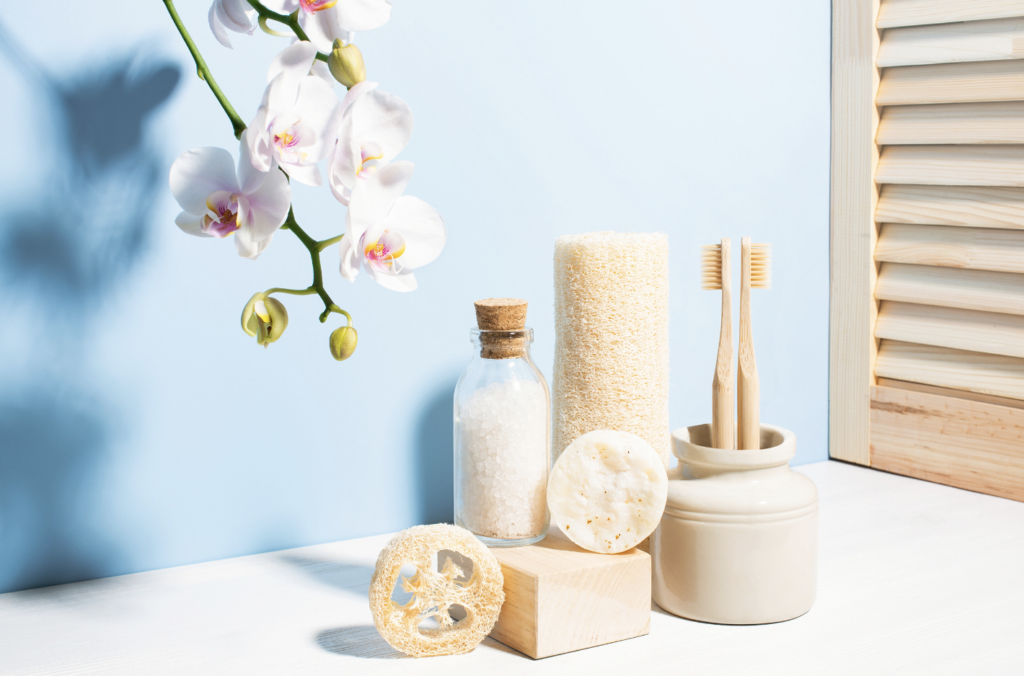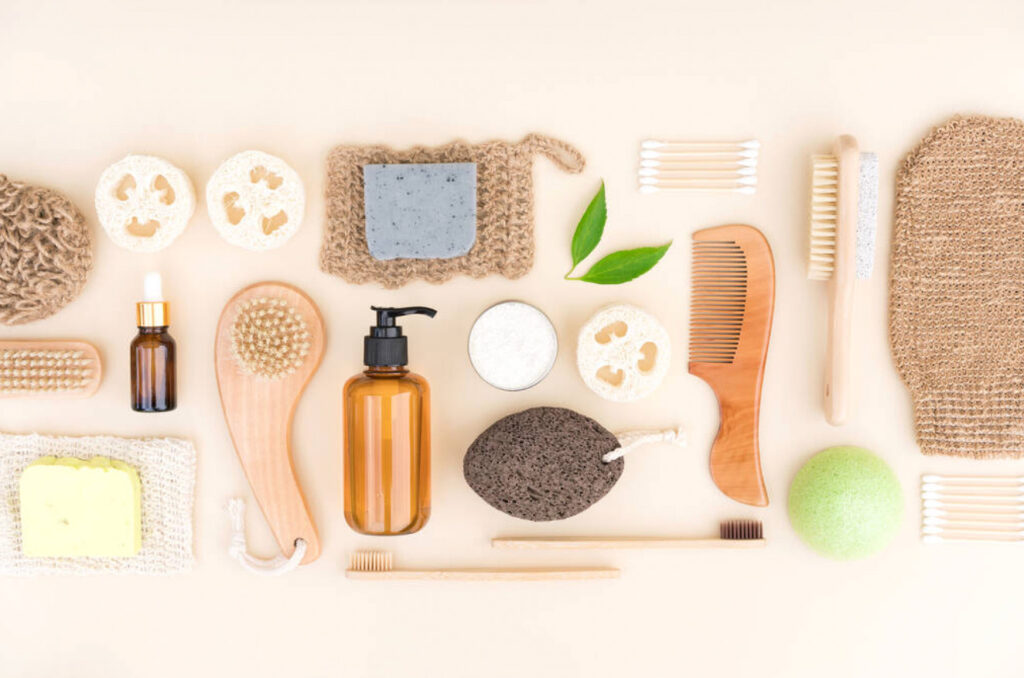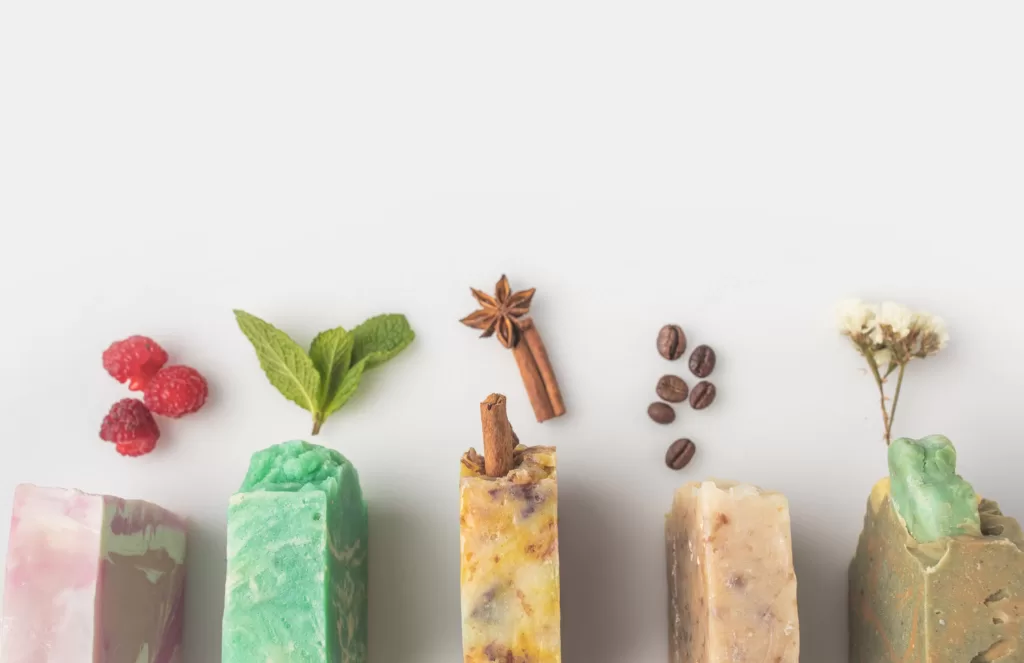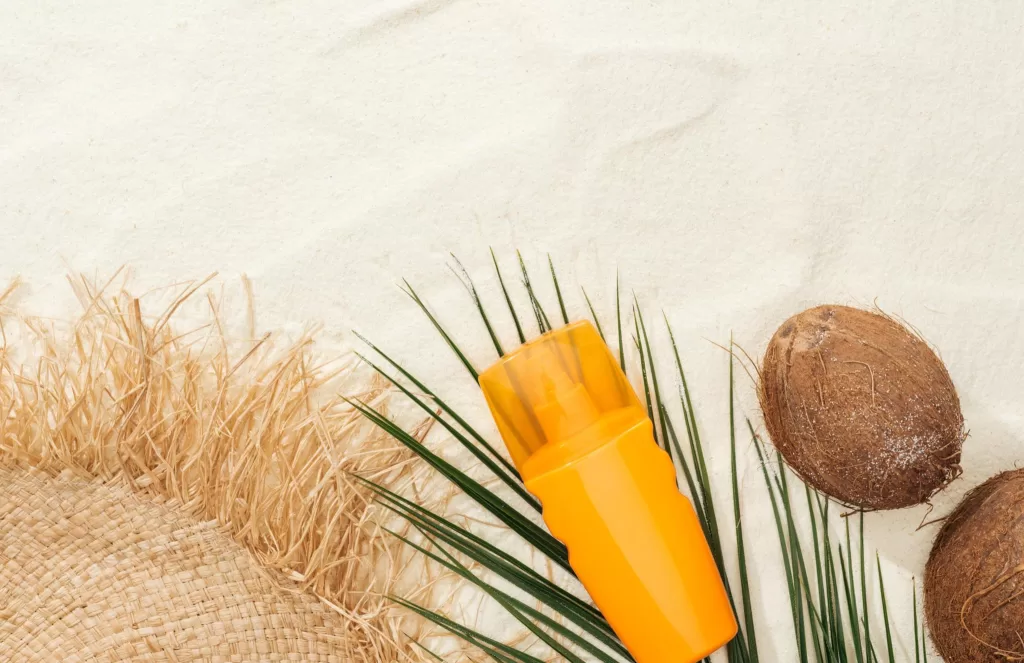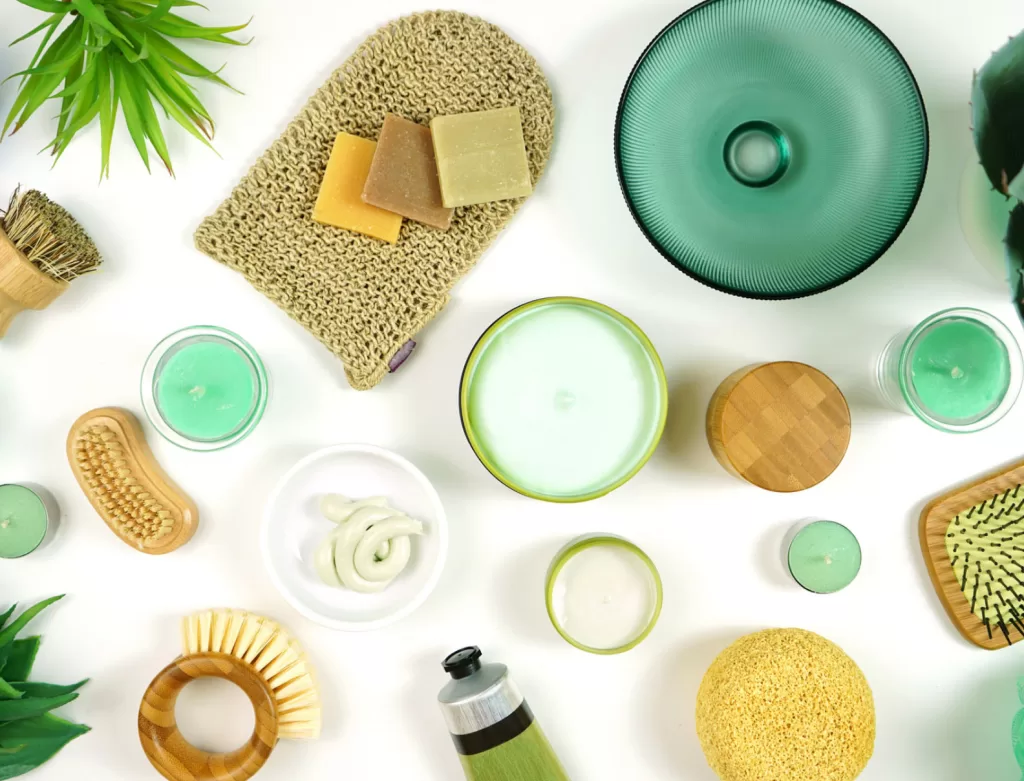How To Create a Plastic-Free Beauty Routine
Estimated reading time: 16 minutes
Hoping to make your beauty routine more sustainable? I’ll be the first to admit that beauty products are not necessarily my cup of tea. A self-proclaimed, environmentally friendly tree-hugger, I prefer the au natural look. As much as I can appreciate a nice-smelling lotion, or an artistically done-up eye, makeup has never been that important to me. But the planet is. And I am more than willing to research to ensure that I create a sustainable beauty routine with plastic-free and non-toxic products.
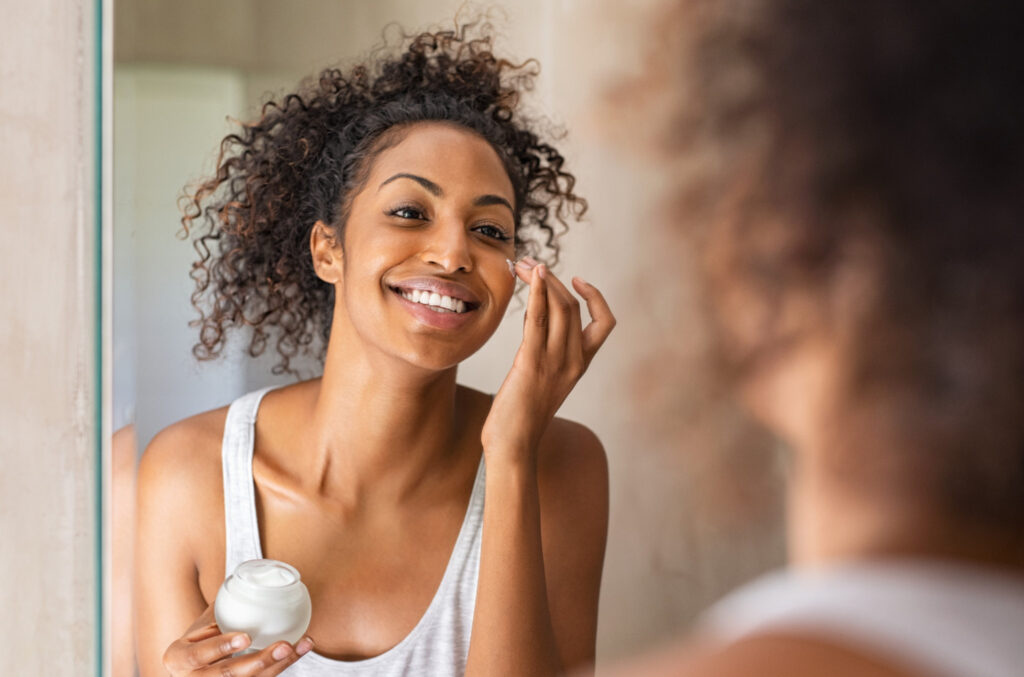
Just as minimalism is best for a sustainable lifestyle in general, so is it for paring down your beauty products. No one expects you to eliminate everything, but focusing on having fewer, multi-use, eco-conscious beauty products for everyday use made from sustainable materials and ingredients can go a long way.
KEy Takeaways
- Many personal care products contain microplastics and liquid plastic polymers that can harm the planet.
- Avoid harmful ingredients when purchasing new health and beauty products.
- Opting for plastic-free, sustainable or naked packaging can help you reduce the plastic in your beauty routine.
- Refusing to buy single-use products such as plastic ear swabs and cotton balls goes a long way.
- When it’s time to replace a tool, like a toothbrush or comb, opt for sustainable materials rather than plastic.
The Problem with Plastics in Personal Care Products
Microplastics and Polymers
The biggest plastic culprit in our beauty products is microplastics, also commonly known as microbeads. According to a report by the UN Environment Programme, these plastic particulates are added: “for a variety of purposes such as sorbent phase for delivery of active ingredients, film formation, exfoliation, viscosity regulation and many others.” Most of these microbeads contain polymers that won’t break down and would take hundreds of years to degrade once they have been rinsed off as plastic waste into our waterways.
Many personal care products also contain liquid plastic polymers that can harm the planet. You can jump ahead to the “Ingredients to Avoid” section of this article to read more about these.
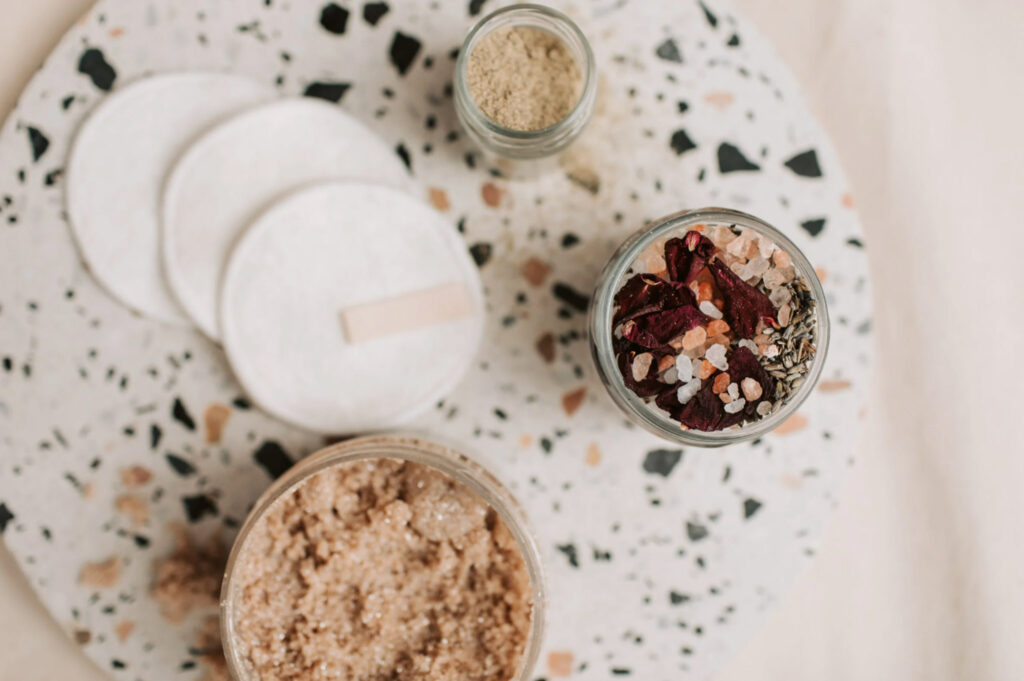
The Good News for plastic-free beauty
In the name of sustainability and Mother Earth, U.S. Congress passed an act called The Microbead-Free Waters Act of 2015, which “prohibits the manufacturing, packaging, and distribution of rinse-off cosmetics containing plastic microbeads.” The deadline for manufacturers was July 2018. Although this is definitely a step in the right direction, we must note that this applies only to “rinse-off” cosmetic products and only to those manufactured in the U.S.
Until more laws are passed banning the use of plastic in all its forms, it is up to us as consumers to look for eco-friendly beauty products that don’t contain these harmful ingredients.
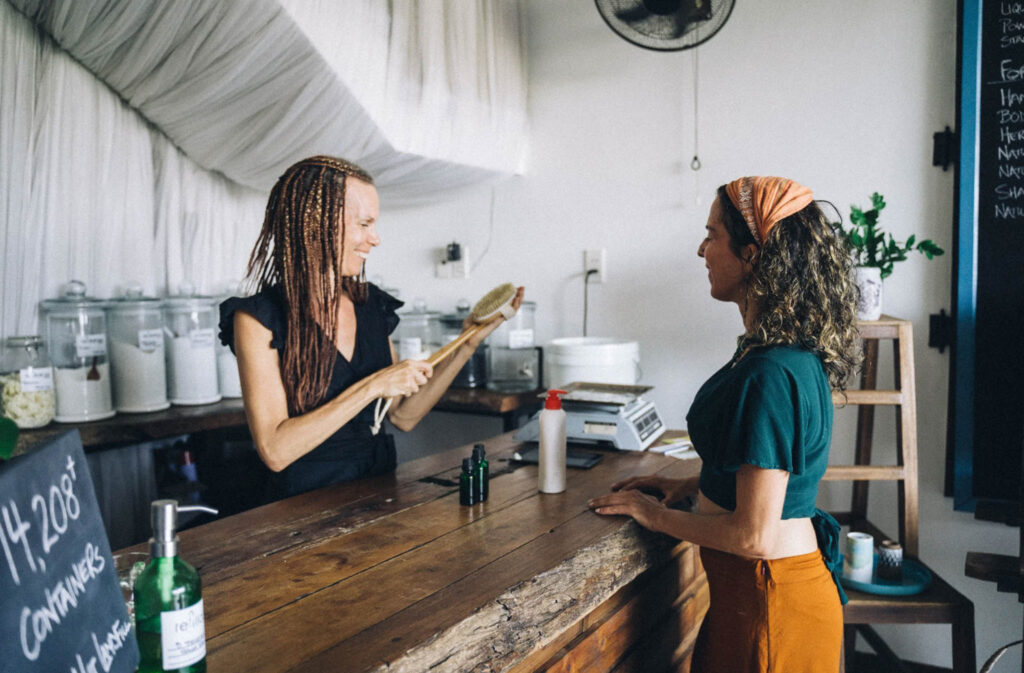
Creating a Plastic-Free beauty Routine
Although it’s difficult to go totally plastic-free, there are many ways you can ensure that your routine is as eco-friendly and zero-waste as possible. Here are some green beauty practices and the main factors to consider when purchasing new products.
1) Ponder the Packaging
Clearly, any packaging meant to be thrown in the garbage after removal, plastic or otherwise, should be avoided.
A product that comes in reusable metal tin or reusable glass jars is a great option. Practice the “refill” component of the 10 Rs of sustainability by purchasing refillable beauty containers and refill pouches in minimal, plastic-free packaging to reduce the waste we produce.
Sign up for our newsletter here and we’ll send you a free copy of our “Ultimate guide: Understanding Sustainability!”
2) Consider Going to the Bar
If you want to seriously reduce your plastic footprint in your routine, the best zero-waste option is package-free beauty bars. You can now get zero-waste lotion bars, plastic-free shampoo, conditioners, body washes, and more for every skin type. By completely eliminating the packaging, you can rest assured that you won’t be contributing to the unbelievable amount of waste produced by the cosmetics industry. Don’t forget to check for all-natural ingredients before you buy!
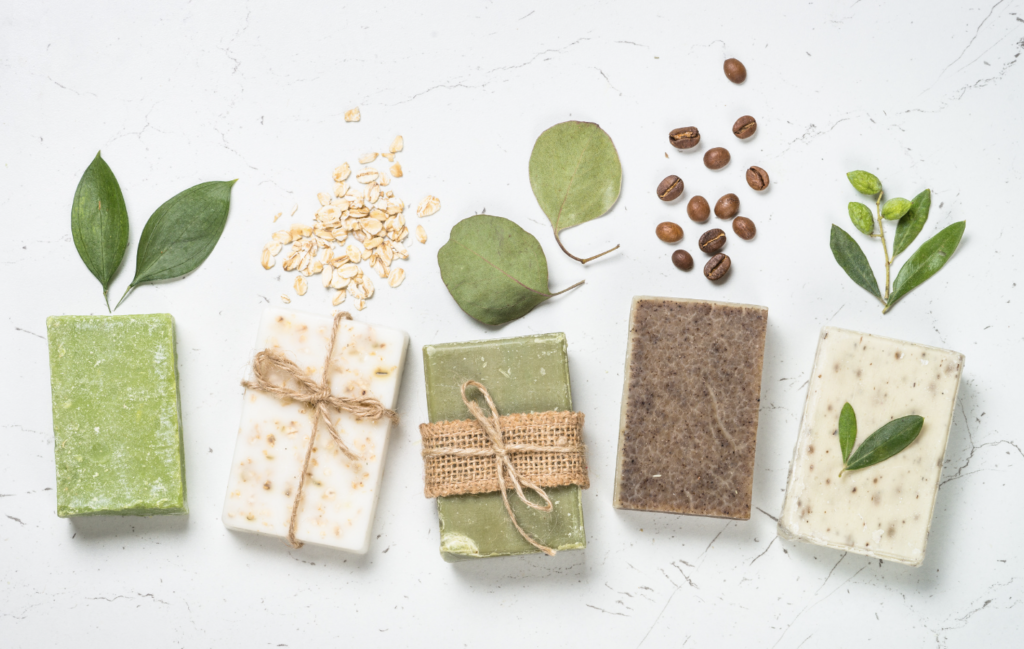
3) Making Material Choices
When in need of new beauty and health tools, ditch the itch to opt for the cheaper plastic varieties. Choosing ones made from more sustainable materials like wood or metal may cost a little more, but they are more eco-friendly and last longer too!
To create an environmentally friendly beauty regimen, next time you need a new toothbrush, razor, or makeup brush, opt for bamboo, aluminum, or even PCR plastic.
4) Saying No to Single-Use Products
We’ve been conditioned and convinced to use products meant to be used a limited amount of times before we chuck them in the garbage destined for the landfill. This requires us to spend more money on these products to replace them often. Genius for marketing, awful for the planet.
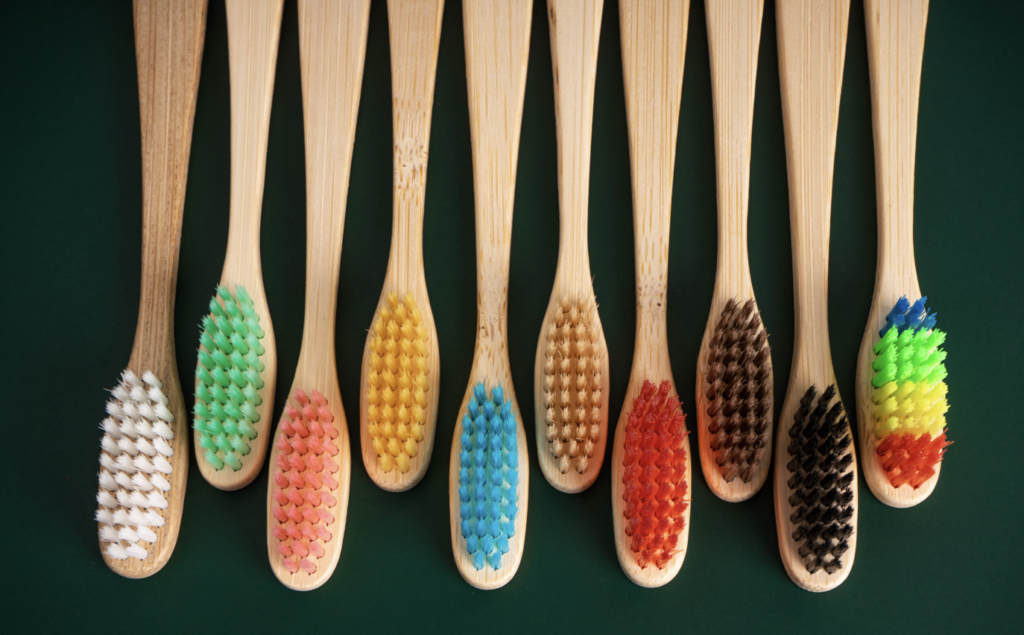
After you’ve used the last of your throwaway plastic razors, cotton swabs, face wipes, and Q-tips, replace them with more permanent fixtures. Try reusable cotton swabs for ear cleaning made from silicone. Simply wash the tips after using them. Invest in a zero-waste safety razor made from stainless steel – more pricey but saves you money (and the environment) over time! And face wipes? Whatever happened to the traditional tried and true fabric facecloth?
Ditch tampons, especially those in plastic tubes, for a menstrual cup. I was nervous about this swap myself, but now that I have the hang of it, I can’t believe I waited so long to make the switch! More of a pad person? Try washable bamboo or organic cotton cloth pads – way more breathable than the throwaway alternative.
5) Ingredients to Avoid for plastic free beauty
Did you know that many of our personal care products contain liquid plastics? Why on Earth would these be necessary? These plastic polymers have functions that range from fixative, such as in hairsprays and gels, to thickening and conditioning.
The problem is that they end up in our waterways when rinsed off in the shower. You can look here to see some examples of specific ones that are commonly found in beauty products in order to avoid them. If you’d like to learn about other harmful ingredients to avoid in your personal care products, I encourage you to read our article Ultimate Guide: Sustainable Health & Beauty.

Thankfully, we’ve discovered that there are many natural and organic beauty alternatives that are better for sensitive skin types that will perform the same tasks. Look for sustainable ingredients you can pronounce, such as cocoa butter, aloe vera, sunflower oil, tea tree, or avocado oil. You also want to avoid anything containing synthetic fragrances and make sure your products are palm oil free. You can keep an eye out for products that are certified cruelty free (Leaping Bunny or PETA) and made with organic ingredients (USDA Organic, COSMOS Ecocert.)
A reminder:
Just as no one person can be perfectly sustainable, neither can a brand or company. Aside from looking at the materials, ingredients, and packaging, choose brands that are transparent with their values and where and how their materials are sourced and manufactured. Looking for third-party accreditations is also a good starting point when seeking new body products. Make sure you dispose of those old products sustainably before moving on to more eco-friendly options!
Final Thoughts for a plastic-free beauty routine
No one expects you to go personal care product free or to become completely zero-waste overnight. I prefer the less-is-best approach, but I am working to become more eco-friendly and sustainable when it comes time to replace the products I use. And if we all focused on making these small changes, it would add up to a big difference!
Remember, every journey must begin with a single step, and creating a plastic-free, low impact beauty routine is no different!
All products recommended to you on Successfully Sustainable are independently researched in depth. To avoid waste and lead a minimal lifestyle, we test products only when required. This post contains affiliate links. If you buy something through our links, we may earn a small commission. Learn more about this here.

